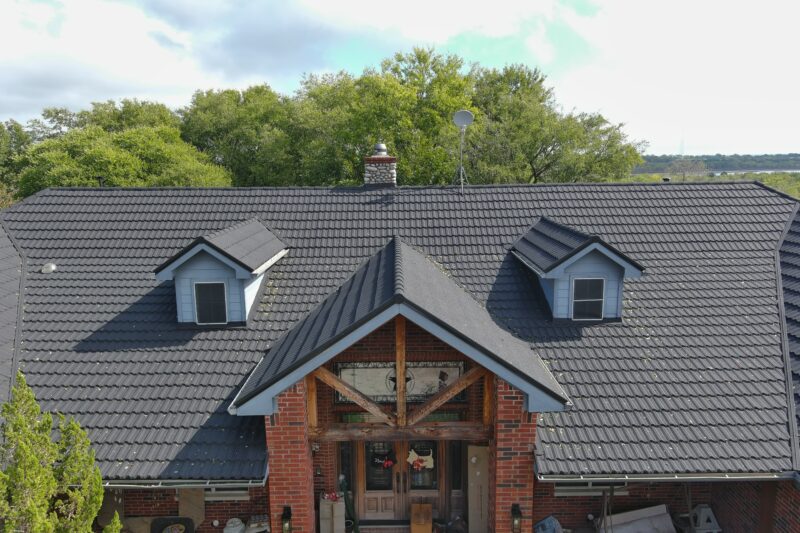The harsh weather of winter will soon be on its way out, and the sunny days of spring will be upon us. As spring arrives, homeowners set to cleaning up their yards and outdoor living spaces to prepare for time in the great outdoors throughout the spring and summer months. Many homeowners like to jump right into the landscaping tasks that make their home look inviting and cheerful, but it is essential to keep other chores in mind. Maintaining the exterior features is vital to ensuring the longevity of various structures and creating a more appealing overall look that increases curb appeal.
As you begin preparations to get your spring chores done, don’t forget to have a checklist in place. One of your home’s most important features that you should look after in the spring is your vinyl siding. This is perhaps the most visible portion of your exterior, and you want to be sure that it is clean and free of damage that can mar the stunning look of your home in the spring sunshine.
In This Article
What Areas Should I Take Care of in the Spring?

Many homeowners know that yearly maintenance tasks they should perform around the outside of their home, but they aren’t sure what tasks are best to do in various seasons. Many homeowners choose to do these chores every spring and every fall in preparation for summer and winter, which tend to be the most severe weather seasons. As we head toward spring, however, we aim to perform maintenance tasks on these areas.
- Next to the roofing and siding, your home’s windows are one of the most visible exterior features of your house. Be sure to wash away winter grime, and ensure that screens are in place and repaired if they have sustained any punctures or tears.
- This is the chore that homeowners tend to enjoy most, as it relieves stress and provides a sense of accomplishment in seeing the fruits of your labor as your gardens grow throughout the season.
- Downspouts and gutters. This maintenance task is one that many homeowners perform twice a year. It is essential to keep downspouts and gutters free from debris and in good working conditions since their job is to divert rainwater away from home. Clogs and damage may result in water damage to the house’s interior or the landscaping outside.
- Patios and porches. These outdoor living spaces can get pretty dusty and dirty over the winter months. Salt from sidewalks and roadways gets tracked into these areas, cobwebs collect, and other critters may have made a winter home here. A good cleaning is always in order before placing furniture in these areas for the season.
Why Is Siding Maintenance Important?

One of the most important areas to focus on with spring maintenance is your home’s vinyl siding. If this architectural element is overlooked, it can become dull and drab looking, making the entire home look dull, regardless of how much work you put into your landscaping. Damages to the siding can also affect its appearance and its ability to protect your home properly. When you add siding maintenance to your spring chores, you help ensure the longest lifespan possible and improve your home’s aesthetic value. Be sure to clean your vinyl siding thoroughly in the spring, and add these items to your siding inspection checklist.
- Look for algae, lichen, fungus, and moss. If shrubs and trees are located close to your vinyl siding, you may see the growth of algae and moss. Be sure to clean these items off to protect your investment. A thorough cleaning once a year is a great way to keep your siding looking new. As you inspect your siding, look for places that these growths may extend behind the siding, as this may indicate water damage.
- Inspect for signs of weathering. The harsh elements will begin to take a toll on your siding after several years. Look for signs like cracking and fading that could lead to bigger issues down the road. If this damage is confined to a specific area, you may be able to replace a portion of your siding to maintain the overall appearance and function for many more years.
- Look for cracks. Cracks in vinyl siding can allow water to get behind the panels and cause damage, and it opens up an area for insects to set up nests. Be sure to have these cracks repaired or replaced as soon as possible.
- Watch out for deformations and melting. The extreme summer heat from the sun’s rays can cause damage like melting to your vinyl siding. If you have a grill or fire features located too close to the house, they may also cause melting. Get these portions of the siding repaired to protect your investment.
- Check for dents. Impact damage from hail and other objects can dent your siding, weaken its structure, and mar its appearance. If the denting is limited to a small area, replacement should be an inexpensive endeavor.
- Inspect for small nicks and chips. Minor vinyl siding damage like this is easy to repair with paint and other touch-up products.
- Look for waves in the siding. If you see this type of deformation in your siding, extreme heat or possible water damage may have caused it. A professional siding contractor can advise you on the best way to handle repairs.
When you keep up with spring maintenance, you ensure the viability of the investment in your home’s exterior structure and add curb appeal that your neighbors will notice. It is important to have a checklist on hand of the chores you need to complete and the items you need to inspect every year. Keeping your vinyl siding repaired and in good shape will help protect your interior from the elements and save you from more expensive repairs that may be necessary if minor damage goes unchecked. Talk to a professional about your next steps for windows.
